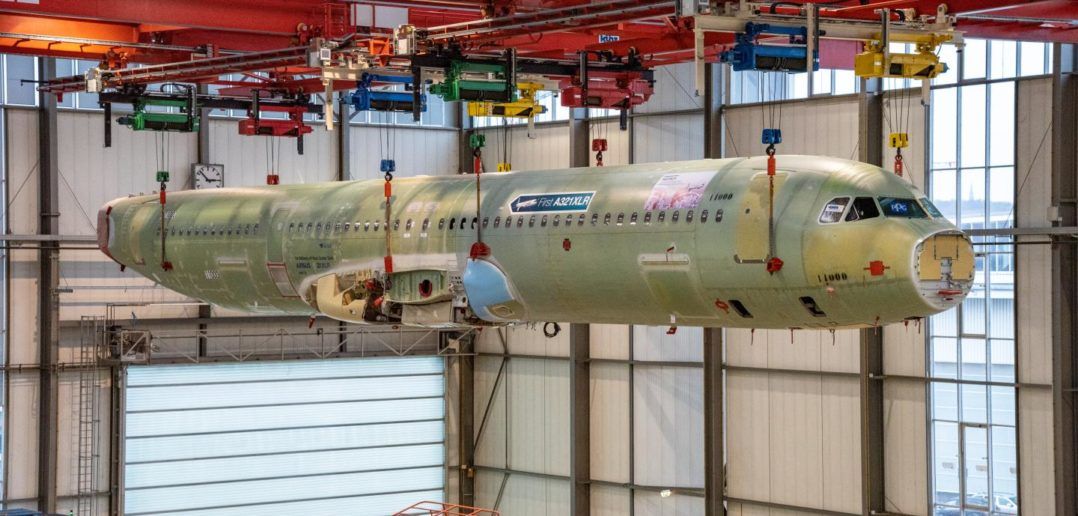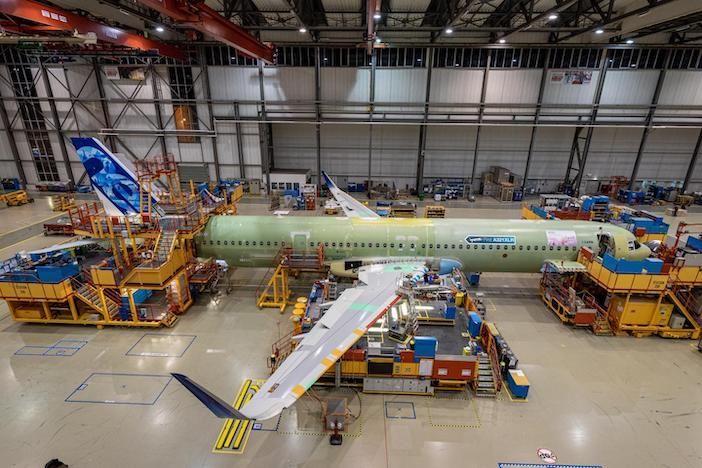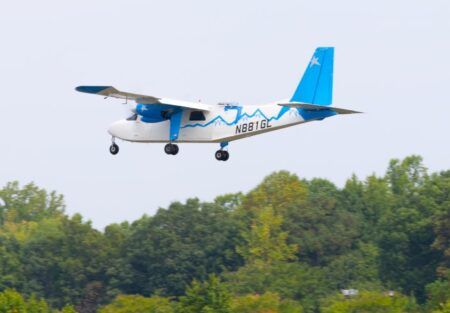Flight testing and certification of the Airbus A321XLR is on track to start next year after the structure of the first flight test aircraft, MSN11000 was completed in Hamburg, Germany.
MSN11000 is the first of three aircraft which will perform the flight testing and type certification program for the A321XLR. Flight testing is planned to start next year before series production and entry into service of the aircraft in 2023.
While other Airbus final assembly line (FAL) locations will eventually be producing A321XLRs, Hamburg is the first to put the variant into series production and is where the test aircraft are being built.
Michael Menking, head of the A320 family programme said, “For the A321 family, we have started all the head-of-versions in Hamburg – the real first ones – and it is our intention to build these aircraft also at the other sites.
“We are currently on the way to also have the A321XLR delivered out of other Single Aisle FALs. So it is important for sure that all the teams learn from the experience in Hamburg so we can bring this knowledge to the other facilities. This is also what we are doing with the A320 Family Airspace cabin which we started in Hamburg.”
The structural completion of MSN11000 on the FAL in Hamburg follows the recent assembly and equipping of the Major Component Assemblies (MCAs) and their subsequent delivery and introduction on schedule into the FAL in November.
These MCAs included: the nose and forward fuselage, delivered from Saint Nazaire; the centre and aft fuselage assembled in Hamburg; the wings from Broughton; the landing gears supplied by Safran, and the vertical and horizontal tailplanes from Stade and Getafe respectively.
Of the four A320 Family assembly lines in Hamburg, the one which is processing the first A321XLR is referred to as FAL Line 2, which is inside the “Hangar-9” building. The subsequent two A321XLR development aircraft – MSN11058 and MSN11080 – will be built on the same assembly line.

Gerd Weber, head of A320 family value stream management and FALs said, “In the final assembly of the A321XLR aircraft there is not a big variation compared with the other A321 aircraft. The major differences in the -XLR are seen in the pre-FAL, at section assembly level, where the RCT is installed, for example.
“This test aircraft has a partial cabin installed to leave space for all the required flight test equipment. What is also specific for this first A321XLR aircraft is that there is a lot of documentation work to be done, especially for flight test installation, which is very different from our serial process. So this requires a special focus by all the teams in closing the documentation and dealing with any discrepancies.”
MSN11000 will next have its flight-test-instrumentation (FTI) suite installed, followed by installation of its CFM Leap engines and nacelles. The engines will then be tested for the first time, as well as the landing gear retraction mechanism and the door fairings, followed by an overall quality inspection of the aircraft.
The aircraft’s external paint scheme will then be applied before it is handed over to the flight-test teams. They will first activate and run through a series of ground tests on all the systems, flight controls, engines and the APU.
Taxiing runs and the first flight of the -XLR is then planned to take place next year.





